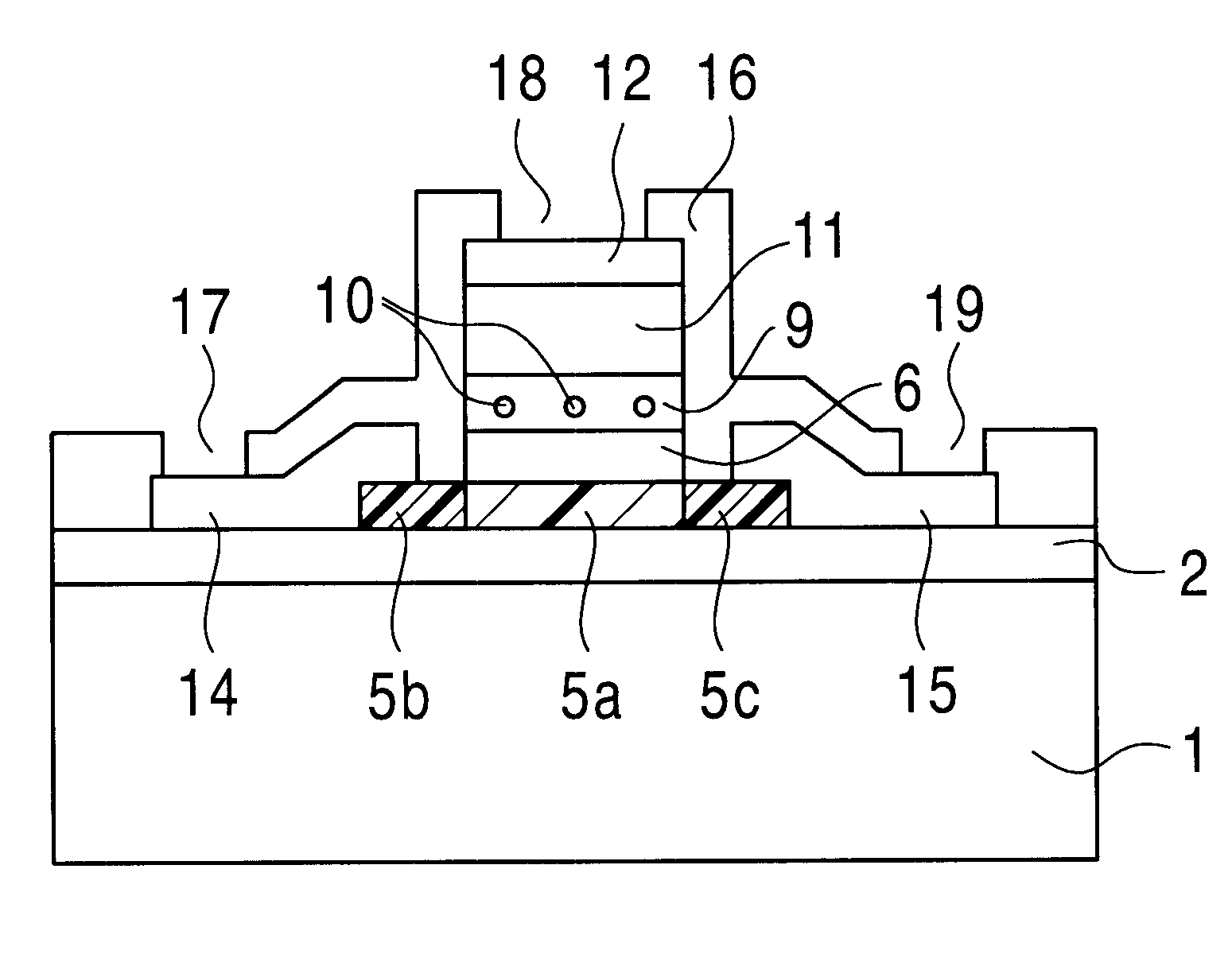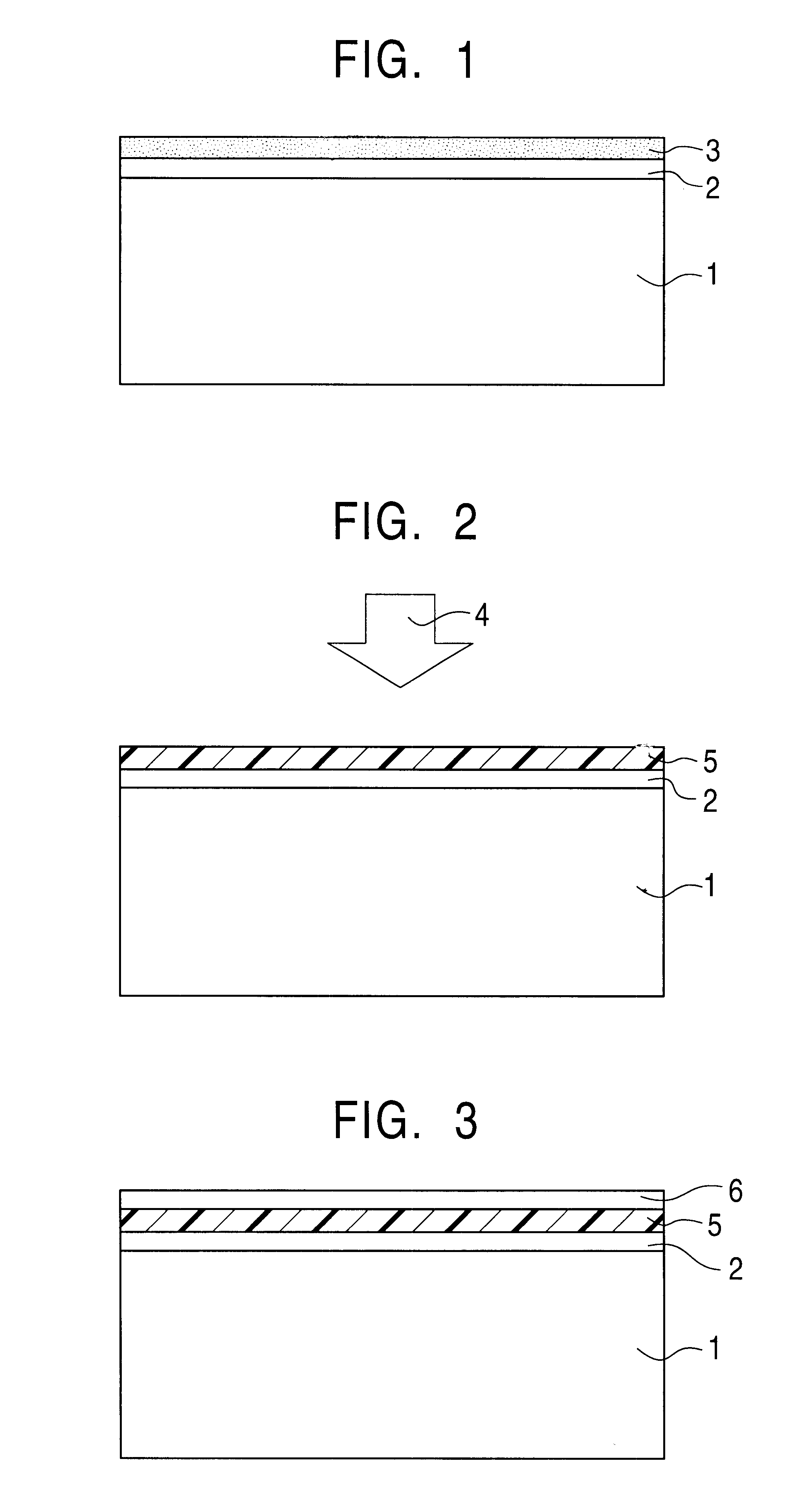Methods for fabricating memory devices
a memory device and floating gate technology, applied in the field of memory devices having multi-dot floating gate fabrication, can solve the problems of limited integration of the semiconductor memory based on such constitution, requiring a larger cost and longer process time,
- Summary
- Abstract
- Description
- Claims
- Application Information
AI Technical Summary
Benefits of technology
Problems solved by technology
Method used
Image
Examples
example
On the surface of a quartz substrate of 500 .mu.m thick, an SiO.sub.2 film of 200 nm thick was formed by the PECVD process.
Next, a hydrogenated amorphous silicon film was formed on the SiO.sub.2 film by the PECVD process, and then dehydrogenated by keeping the film within a vacuum chamber conditioned at 10.sup.-6 Torr and 400.degree. C. for 2 hours, thereby to form an Si film of 30 nm thick.
Next, XeCl excimer laser beam with a pulse width of 30 nsec and a pulse energy density of 300 mJ / cm.sup.2 (wavelength=308 nm) was irradiated as much as 100 shots on the surface of the Si film, thereby to effect the laser annealing. By such laser annealing, the Si film was polycrystallized and thus a polysilicon film was formed.
Next, a tunnel SiO.sub.2 film of 10 nm thick was formed on the polysilicon film by the PECVD process.
Next, on the tunnel SiO.sub.2 film, a Si-excessive non-stoichiometric SiO.sub.x film (x=1.59) was formed by the PECVD process using SiH.sub.4 gas at a flow rate of 10 SCCM a...
PUM
 Login to View More
Login to View More Abstract
Description
Claims
Application Information
 Login to View More
Login to View More - R&D
- Intellectual Property
- Life Sciences
- Materials
- Tech Scout
- Unparalleled Data Quality
- Higher Quality Content
- 60% Fewer Hallucinations
Browse by: Latest US Patents, China's latest patents, Technical Efficacy Thesaurus, Application Domain, Technology Topic, Popular Technical Reports.
© 2025 PatSnap. All rights reserved.Legal|Privacy policy|Modern Slavery Act Transparency Statement|Sitemap|About US| Contact US: help@patsnap.com



